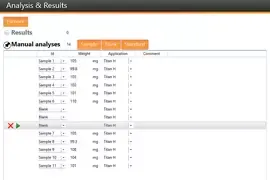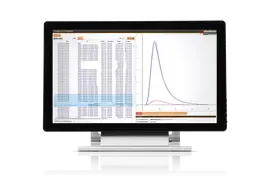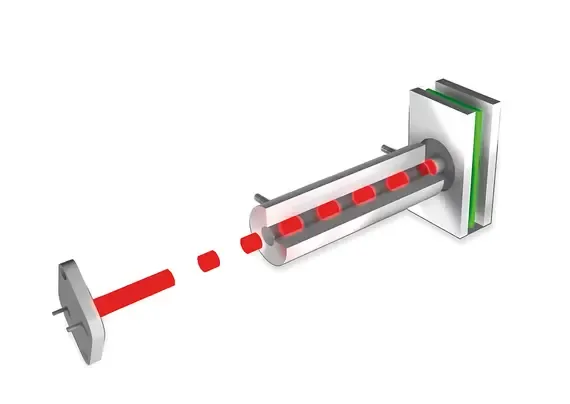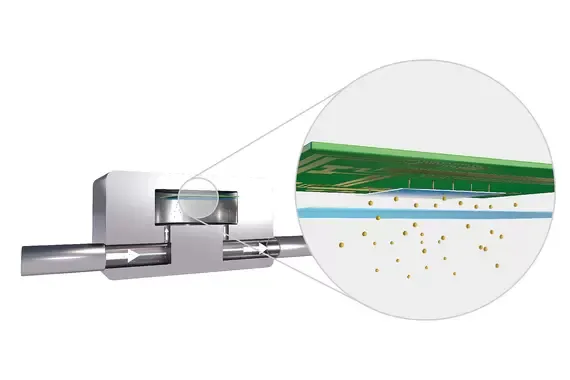









Analyzer of oxygen / hydrogen ELEMENTRAC OH-p 2
The new ELEMENTRAC OH-p 2 is a powerful and robust elemental analyzer for measurement of oxygen and hydrogen concentrations in inorganic samples like steel, iron, copper or ceramics. The highly sensitive NDIR and thermal conductivity detectors reliably detect element concentrations from low ppm content to high percentages.
The innovative sample port system with pulsed chamber rinsing and vertical sample drop allow for user-friendly and comfortable analysis of rod-shaped, granular or powdery samples with a weight of up to 2 grams.
The ELEMENTRAC OH-p 2 elemental analyzer meets or exceeds the requirements of all relevant international standards such as ASTM E 1019 or DIN EN 3976.
OXYGEN / NITROGEN ANALYZER ELEMENTRAC OH-P 2
- Low gas consumption and high sensitivity due to closed gas system
- Easy application of pins, powders and granules
- Inexpensive argon as carrier gas possible
- Short analysis time
- Powerful impulse furnace with 8.5 kW
- Optional Autocleaner
- Reliable ONH elemental analysis of inorganic samples like steel, non-ferrous metals, ceramics, slags, ores, etc.
OPERATION AND ANALYSIS PROCESS
Step 1: Logging the sample into the ELEMENTS software The sample ID is logged into the software and the weight is automatically transferred (see step 2)
|
Step 2: Weighing and introduction of sample into the port The ELEMENTRAC OH-p 2 analyzes volumes from a few mg up to 2 grams safely and precisely. Rod-shaped or granular samples can be applied directly. For the elemental analysis of powders, a capsule is recommended which does not have to be sealed. |
Step 3: Analysis The empty graphite crucible is then placed on the lower electrode and the elemental analysis is started via the ELEMENTS software. The software controls all subsequent process steps. |
Step 4: Data output and export 120 to 180 seconds after the analysis has started, the measured concentrations are available for export as a report or via LIMS. |
CUVETTE WITH VARIABLE LENGTH
| THERMAL CONDUCTIVITY CELL WITH HIGH SENSITIVITY
|
INTEGRATED STANDARD SOLUTIONS
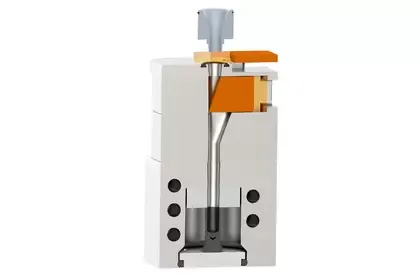
- Robust against dust development
- No closing of capsules required
- Direct application of up to 2000 mg granulate
- Low in maintenance and wear
OPTIONS
Autocleaner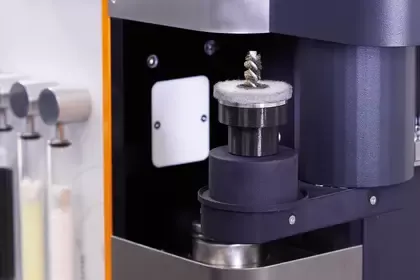
The new optional Autocleaner reliably removes these deposits, enabling precise elemental analysis even for high throughputs. Additionally, an efficient gas calibration and cleaning furnace for thorough carrier gas pre-cleaning are available for the elemental analyzer.
ELEMENTS SOFTWARE
TYPICAL SAMPLE MATERIALS
alloys, aluminum, ashes, carbides, cast iron, ceramics, copper, ferroalloys, iron, metals, ores, refractory metals, silicon, steel, ...


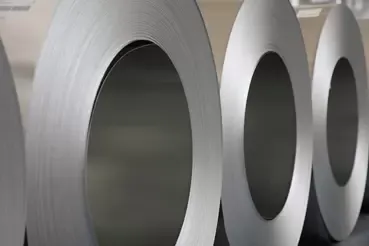
TECHNICAL DATA
| Measured elements | hydrogen, oxygen |
| Samples | inorganic |
| Furnace alignment | vertical |
| Sample carrier | graphite crucibles |
| Field of application | ceramics, engineering / electronics, steel / metallurgy |
| Furnace | electrode impulse furnace (max. 8,5 KW*), temperatures in excess of 3,000 °C |
| Detection method | solid state infrared absorption for oxygen thermal conductivity for nitrogen and hydrogen |
| Typical analysis time | 120 -180 s |
| Chemicals required | schuetze reagents, magnesium perchlorate, sodium hydroxide |
| Gas required | compressed air, nitrogen 99.995 % pure, all gases with (2 - 4 bar / 30 - 60 psi) |
| Power requirements | 3~ 400 V, 50/60 Hz, max. 8,500 W |
| Dimensions (W x H x D) | 56 x 78 x 64 cm |
| Weight | ~ 165 kg |
| Required equipment | PC, monitor, balance (resolution 0.0001g) |
| Optional accessories | carrier gas purification, external chiller, gas calibration unit |
| * limited to 6.8 kw in application settings |

